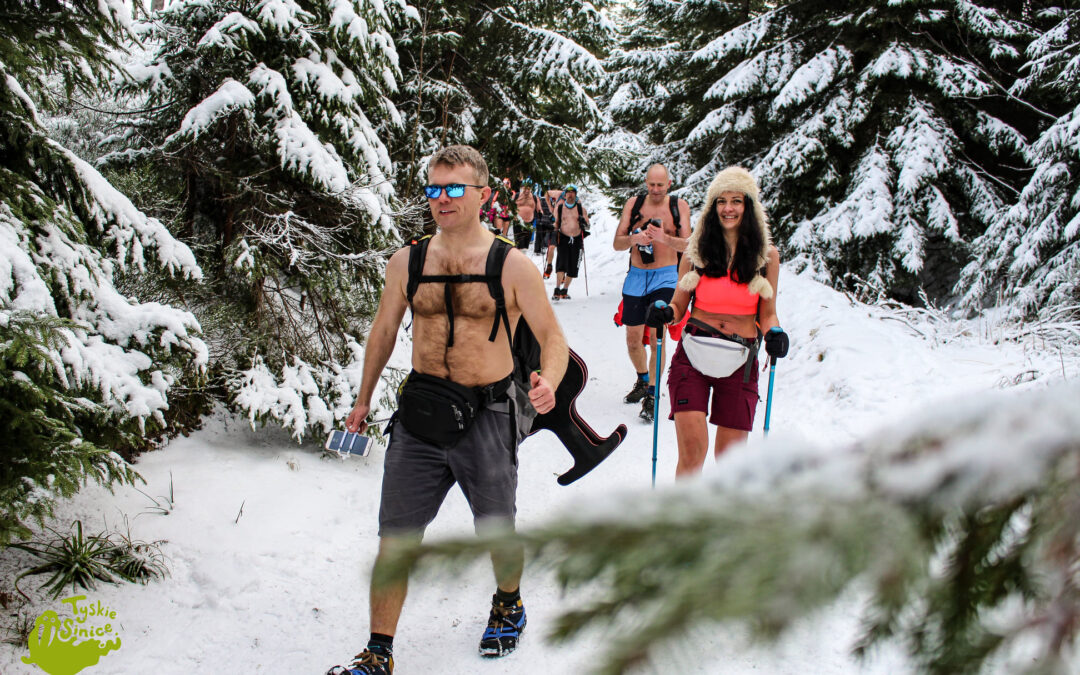As winter swimming becomes increasingly popular in Poland, several clubs have taken the practice a step further by organising mountain treks in similarly scanty clothing.
Growing numbers of Poles participate in chilly outdoor dips, with several winter swimming clubs opening up. An annual four-day gathering of winter swimmers in the coastal town of Mielno last year was attended by 6,000, up from 5,000 in 2019. The next edition is planned for 14 February this year.
The Czechowie winter swimming group, nicknamed “Walruses and Seals”, has since 2010 organised monthly dips for its members between the start of October and late March each year. The group meets at the Kaniowo reservoir near the city of Bielsko-Biała in southern Poland.
“It is most pleasant when the air temperature is at -8, -10 degrees Celsius,” Piotr Guzy, head of the club, told Gazeta Wyborcza. “You then get into the reservoir like it’s a bath, the water seems warm.”
The group has now also begun organising mountain treks for members dressed in shorts. “This year they have become extremely popular,” says Guzy, though he warns that they are not for novices. One should build up some experience of winter swimming before embarking on the treks, he advises.
At the start of the year the club organised a winter trek – with most of the club’s members showing up shirtless – on Kozia Góra (Stefanka) hill in southern Poland. Today, the group climbed Klimczok (1,117m), and it is soon planning a trek up Babia Góra (1,725m) on the border with Slovakia.
Asked why he does it, Guzy claims that such practices help boost immunity. He works in a coal mine and says that, despite the mass outbreaks of the coronavirus among miners last year, he has repeatedly tested negative for the virus, while other club members have also remained healthy, reports Gazeta Wyborcza.
Other clubs have also opened winter trekking groups, including “Tyskie Sinice” from the town of Tychy in Silesia. In December, members climbed Śnieżka (1,603m), the highest peak in the Karkonosze mountain range.
They have since also been up Stożek Wielki (978m) on the Czech border and Turbacz (1,315m) in southern Lesser Poland. The latter trip was attended by a record 40 club members, and helped raise awareness and funds for a child suffering from spinal muscular atrophy (SMA).
In previous years, it was only individuals who did such climbs in shorts, group member Mirosław Sitek tells Gazeta Wyborcza. “But this winter the fun has really started,” he continues.
Sitek admits that reactions to their activities are mixed, including “admiration, curiosity but also indignation and incomprehension”. Momentum is building. however. This week, despite the pandemic, the club had record attendance at a charity winter swim in Tychy’s Paprocańskie Lake.
Main image credit: Tyskie SInice/Facebook

Maria Wilczek is deputy editor of Notes from Poland. She is a regular writer for The Times, The Economist and Al Jazeera English, and has also featured in Foreign Policy, Politico Europe, The Spectator and Gazeta Wyborcza.




















